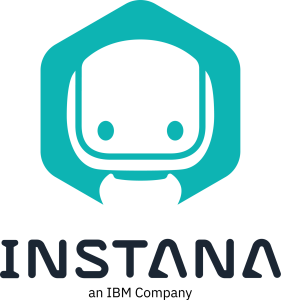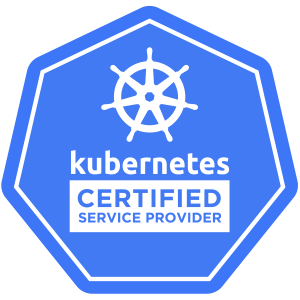 Stephen Birch
| 01 September 2025 |
Stephen Birch
| 01 September 2025 |
Optimising IT Operations and Reducing Waste in Hybrid and Multicloud Environments

Modern IT operations can no longer afford to treat performance, cost, and security as isolated silos. In today’s fast-paced digital landscape, businesses are increasingly adopting hybrid and multicloud strategies to gain flexibility, scalability, and resilience. However, this shift brings with it a new level of complexity—one that demands a smarter, more integrated approach to IT operations.
At DeeperThanBlue, we help organisations navigate this complexity using IBM’s powerful suite of tools. By combining automation, observability, security, and cost optimisation, we enable our clients to build intelligent, self-managing systems that reduce waste, improve performance, and accelerate innovation across all cloud, on premise and private data centre environments.
The Growing Complexity of Hybrid and Multicloud Environments
Cloud is ubiquitous in the IT world, where hybrid and multicloud environments are now the norm rather than the exception. Enterprises run workloads across on-premises data centres, private clouds, and multiple hyperscalers and public cloud providers. While this approach offers strategic advantages, such as avoiding vendor lock-in and optimising for performance or cost, it also introduces significant operational challenges:
- Fragmented visibility: Monitoring performance across diverse platforms is difficult without a unified observability layer.
- Resource inefficiencies: Overprovisioning and under-utilisation are common due to lack of real-time insights.
- Security gaps: Inconsistent policies and access controls increase the risk of breaches.
- Manual intervention: Without automation, teams spend excessive time firefighting rather than innovating.
To address these challenges, organisations need a cohesive strategy that brings together performance monitoring, cost control, automation, and security into a single operational model.
Modern IT operations can no longer afford to treat performance, cost, and security as isolated silos.
IBM’s Closed-Loop System: Instana, Turbonomic, and Concert
 IBM offers a tightly integrated suite of tools that work together to form a closed-loop system for IT operations. This system is built on three core components:
IBM offers a tightly integrated suite of tools that work together to form a closed-loop system for IT operations. This system is built on three core components:
1. Instana – Real-Time Observability
Instana provides deep, real-time visibility into applications, services, and infrastructure. It automatically discovers and maps dependencies across environments, enabling teams to:
- Detect anomalies and performance bottlenecks instantly
- Trace requests across microservices and containers
- Understand the impact of changes in real time
Instana’s AI-driven insights reduce mean time to resolution (MTTR) and empower teams to proactively manage performance.
 For example, where an eCommerce enterprise intermittent changes in demand, such as fluctuations during Black Friday events, traditional monitoring tools fail to pinpoint the root cause quickly. Instana will:
For example, where an eCommerce enterprise intermittent changes in demand, such as fluctuations during Black Friday events, traditional monitoring tools fail to pinpoint the root cause quickly. Instana will:
- Automatically discover all microservices, containers, and dependencies in real time.
- Detect latency spikes in the checkout service and trace them back to a misconfigured database connection pool.
- Provide a visual service map that highlights the affected components and their upstream/downstream impact.
As a result, the mean time to resolution is reduced from hours to minutes so disruption is minimised; customer experience is improved with reduced cart abandonment; and insights are fed directly into Turbonomic for resource optimisation.
2. Turbonomic – AI-Powered Resource Optimisation
Turbonomic continuously analyses application demand and infrastructure supply to make real-time decisions about resource allocation. It can:
- Automatically scale workloads based on demand
- Optimise CPU, memory, and storage usage
- Prevent performance degradation and overprovisioning.
By integrating with Kubernetes, Turbonomic ensures that containerised workloads are always running in the most efficient configuration.
For example, a SaaS company is facing rising cloud bills due to overprovisioned VMs and under-utilised Kubernetes nodes running across AWS and Azure. With Turbonomic in place, the company can:
- Continuously analyse application demand and infrastructure supply
- Actively resize VMs, move workloads to cheaper instances and consolidate Kubernetes pods
- Allow Turbonomic to execute actions or with approved workflows.
The result of this is that the company sees a huge saving in monthly cloud spend without any impact on application performance or availability. Moreover, cost data is integrated with Kubecost IBM’s comprehensive cost monitoring and optimisation solution for Kubernetes) and visualised in Instana dashboards.
3. Concert – Intelligent Automation and Orchestration
Concert acts as the orchestration layer, automating workflows and remediation actions based on insights from Instana and Turbonomic. It enables:
- Policy-driven automation of operational tasks
- Integration with ITSM (Information Technology Service Management) tools for incident management
- Closed-loop remediation without human intervention
Together, these tools create a self-healing system where performance issues are detected, analysed, and resolved automatically.
For example, a financial institution needs to comply with strict SLAs for application uptime but finds that manual incident response is too slow and error prone.
With Concert working alongside Instana and Turbonomic, the company can:
- Receive alerts from Instana (e.g. a memory leak is detected in a trading app)
- Automatically respond with a predefined remediation workflow: scale up the affected pod; notify DevOps; log incident in ServiceNow
- Allow Turbonomic to ensure that new resources are optimally placed.
As a result, the response time is reduced by 70%, SLA compliance is improved, and the DevOps teams are freed from repetitive tasks to focus on innovation.
Cost Visibility and Control with Kubecost + Instana
In cloud-native environments, cost management is a growing concern. Kubernetes, while powerful, can lead to unpredictable spending if not properly configured and monitored. This is where Kubecost comes in. Kubecost delivers real-time cost visibility and insights needed to not only understand infrastructure spend but intelligently reduce spend and avoid over-provisioning within Kubernetes environments. It provides granular visibility into Kubernetes costs, including:
- Cost per namespace, deployment, or service
- Real-time alerts for budget overruns
- Recommendations for rightsizing workloads
By integrating Kubecost with Instana, organisations can embed cost metrics directly into their observability dashboards. Bringing together operational and financial data enables:
- Unified decision-making: Teams can see how performance impacts cost and vice versa.
- Proactive optimisation: Cost anomalies can trigger automated actions via Concert.
- Cross-functional collaboration: DevOps and FinOps teams can align around shared goals.
This integration transforms cost management from a reactive process into a strategic capability
Kubernetes: The Foundation of Modern IT
Kubernetes has become the de facto standard for container orchestration. It enables organisations to deploy, scale, and manage containerised applications with ease. However, Kubernetes alone doesn’t solve the challenges of visibility, optimisation, and security.
IBM’s ecosystem enhances Kubernetes by:
- Instana: Providing real-time observability into pods, nodes, and services
- Turbonomic: Continuously optimising resource allocation and scaling
- Concert: Automating remediation and compliance workflows
- Kubecost: Offering detailed cost insights and budget controls
This layered approach ensures that Kubernetes environments are not only performant but also cost-efficient and secure.
As a Kubernetes Certified Service Provider, DeeperThanBlue is one of a handful of agencies who are qualified to deploy Kubernetes environments.
Security and Compliance by Design
Security and compliance in hybrid and multicloud environments are increasingly complex due to the distributed nature of infrastructure, diverse regulatory landscapes, and the need for consistent policy enforcement across platforms. Key concerns include maintaining visibility, enforcing access controls, protecting sensitive data, and ensuring continuous compliance with standards such as GDPR, HIPAA, and PCI-DSS.
IBM’s tools support a proactive, policy-driven approach to security:
- Instana provides real-time observability and application performance monitoring, detecting unusual behaviour that may indicate a breach or other security issue.
- Vault secures secrets and sensitive data by managing access to credentials and encryption keys, ensuring that only authorised entities can interact with critical systems, and that secrets are never hardcoded or exposed.
- Concert, meanwhile, supports governance and compliance by orchestrating security policies across cloud environments, enabling consistent enforcement and auditability by automating compliance checks and remediation actions.
One of the most persistent challenges in these environments is configuration drift—the gradual divergence of deployed infrastructure from its intended state due to manual changes, updates, or misconfigurations. Drift can introduce vulnerabilities, reduce system reliability, and lead to compliance violations.
Here, Terraform (or more specifically Terraform Premium) plays a critical role. It continuously monitors infrastructure state and compares it against the defined configuration in code. When drift is detected—such as unauthorised changes to network settings or resource provisioning—Terraform Premium can alert teams and provide detailed insights into what has changed. More importantly, it enables automated remediation by reapplying the desired configuration, restoring infrastructure to its compliant state. This not only enhances security posture but also ensures that infrastructure remains aligned with organisational policies and regulatory requirements.
By embedding security into every layer of the stack, organisations can reduce risk and meet regulatory requirements without slowing down development.
Why Partner with DeeperThanBlue?
As an IBM Business Partner, DeeperThanBlue brings deep technical expertise and a proven track record of delivering value. We offer:
- Tailored solutions: We align IBM technologies with your unique business goals.
- End-to-end support: From strategy and implementation to training and optimisation.
- Continuous innovation: We help you accelerate your development processes, improve quality and stay ahead in a rapidly evolving landscape.
Whether you’re building new applications, modernising legacy systems or scaling cloud-native applications, we provide the tools and expertise to succeed.
Conclusion: The Future of IT Operations is Integrated
The days of managing performance, cost, and security in silos are over. By adopting an integrated, intelligent approach powered by IBM technologies, organisations can build resilient, efficient, and secure IT operations.
With DeeperThanBlue as your partner, you can unlock the full potential of hybrid and multicloud environments—reducing waste, improving agility, and driving sustainable growth.
Related Content
These might interest you
Kubernetes Certified Service Provider
In today’s fast-paced digital landscape, businesses must embrace agility, scalability, and efficiency to stay ahead of the competition. As a Read More


